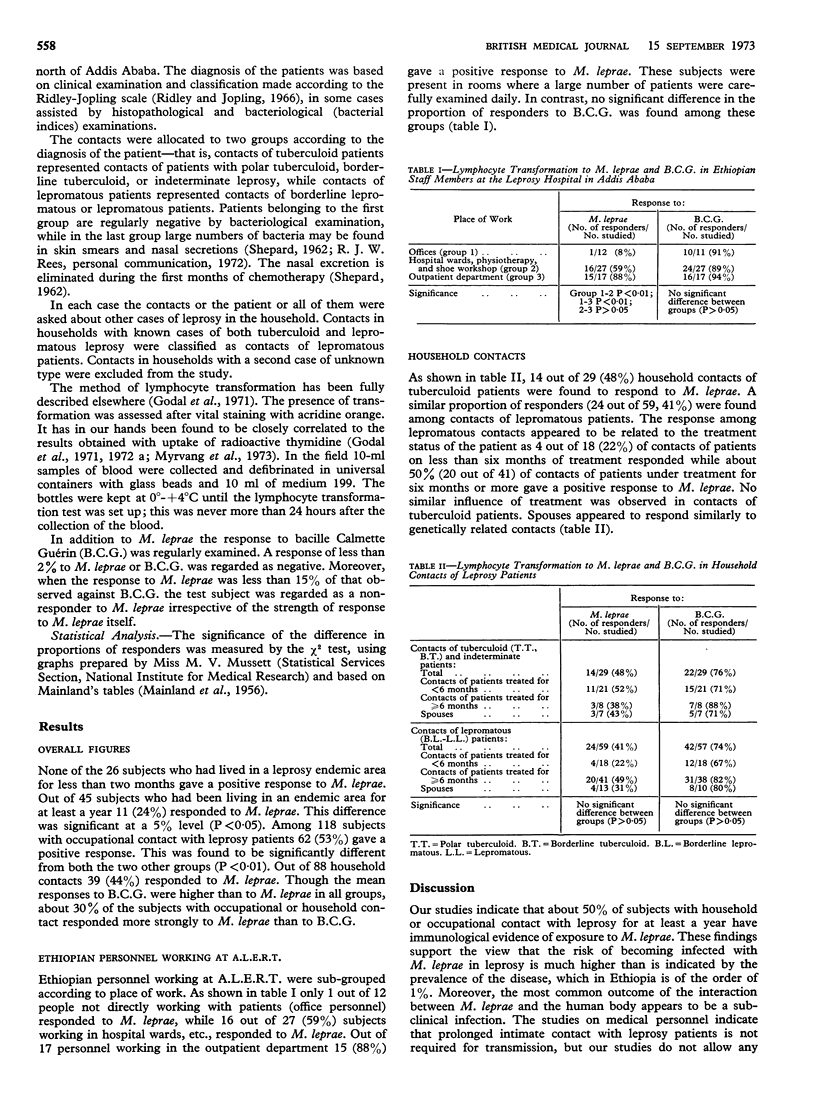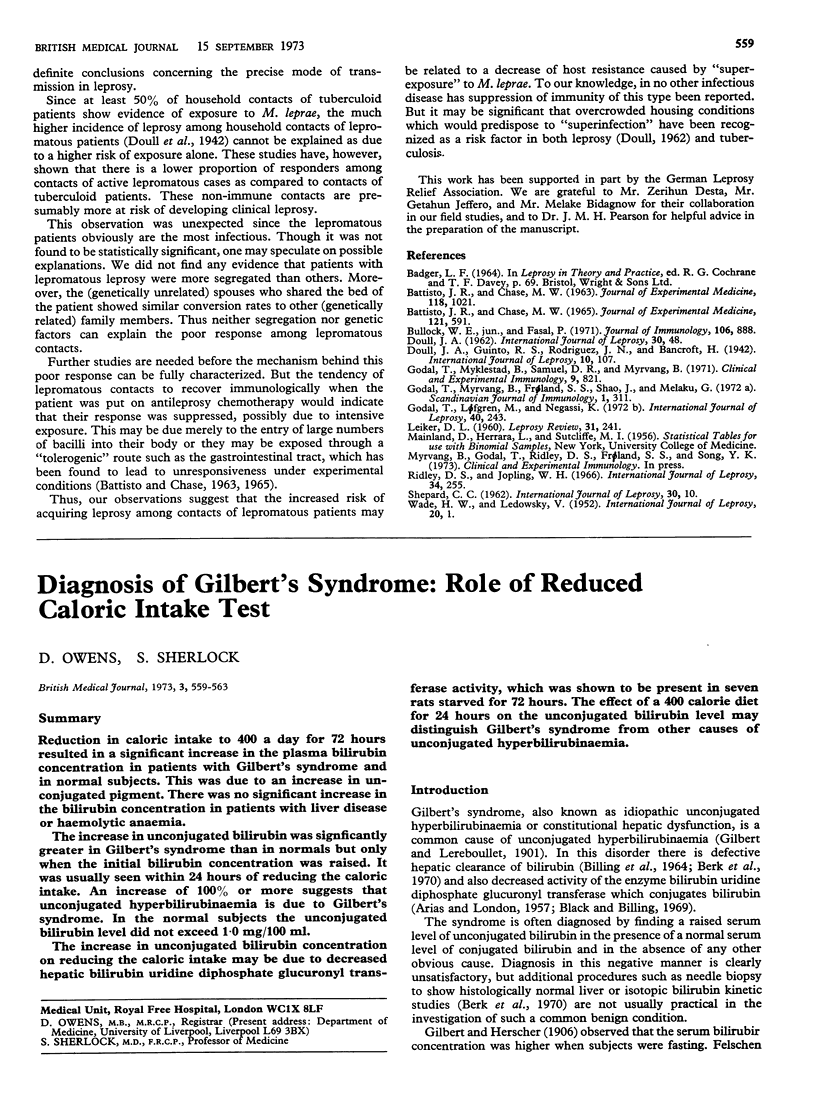Abstract
Lymphocyte transformation has been used to study the immune response to Mycobacterium leprae among contacts and non-contacts of leprosy patients. Of 26 subjects living in a leprosy endemic area for less than two months none responded to M. leprae; 24% of subjects who had lived in an endemic area for more than a year gave a positive response to M. leprae; more than 50% of individuals with occupational contact of leprosy for more than a year responded; and about 50% of contacts of tuberculoid and treated lepromatous patients responded to M. leprae, while only 22% (4/18) of contacts of lepromatous patients treated for less than six months responded.
It seems that leprosy is more highly infectious than is indicated by the prevalence of the disease and that a subclinical infection commonly follows exposure to M. leprae. The relatively low response found in contacts of active lepromatous patients suggests that in these contacts “superexposure” to M. leprae can bring about a decrease in host resistance.
Full text
PDF


Selected References
These references are in PubMed. This may not be the complete list of references from this article.
- BATTISTO J. R., CHASE M. W. IMMUNOLOGICAL UNRESPONSIVENESS TO SENSITIZATION WITH SIMPLE CHEMICAL COMPOUNDS; A SEARCH FOR ANTIBODY-ABSORBING DEPOTS OF ALLERGEN. J Exp Med. 1963 Dec 1;118:1021–1035. doi: 10.1084/jem.118.6.1021. [DOI] [PMC free article] [PubMed] [Google Scholar]
- BATTISTO J. R., CHASE M. W. INDUCED UNRESPONSIVENESS TO SIMPLE ALLERGENIC CHEMICALS. II. INDEPENDENCE OF DELAYED-TYPE HYPERSENSITIVITY AND FORMATION OF CIRCULATING ANTIBODY. J Exp Med. 1965 Apr 1;121:591–606. doi: 10.1084/jem.121.4.591. [DOI] [PMC free article] [PubMed] [Google Scholar]
- Bullock W. E., Jr, Fasal P. Studies of immune mechanisms in leprosy. 3. The role of cellular and humoral factors in impairment of the in vitro immune response. J Immunol. 1971 Apr;106(4):888–899. [PubMed] [Google Scholar]
- DOULL J. A. The epidemiology of leprosy present status and problems. Int J Lepr. 1962 Jan-Mar;30:48–66. [PubMed] [Google Scholar]
- Godal T., Lofgren M., Negassi K. Immune response to M. leprae of healthy leprosy contacts. Int J Lepr Other Mycobact Dis. 1972 Jul-Sep;40(3):243–250. [PubMed] [Google Scholar]
- Godal T., Myklestad B., Samuel D. R., Myrvang B. Characterization of the cellular immune defect in lepromatous leprosy: a specific lack of circulating Mycobacterium leprae-reactive lymphocytes. Clin Exp Immunol. 1971 Dec;9(6):821–831. [PMC free article] [PubMed] [Google Scholar]
- Godal T., Myrvang B., Froland S. S., Shao J., Melaku G. Evidence that the mechanism of immunological tolerance ("central failure") is operative in the lack of host resistance in lepromatous leprosy. Scand J Immunol. 1972;1(4):311–321. doi: 10.1111/j.1365-3083.1972.tb03296.x. [DOI] [PubMed] [Google Scholar]
- Ridley D. S., Jopling W. H. Classification of leprosy according to immunity. A five-group system. Int J Lepr Other Mycobact Dis. 1966 Jul-Sep;34(3):255–273. [PubMed] [Google Scholar]
- SHEPARD C. C. The nasal excretion of Mycobacterium leprae in leprosy. Int J Lepr. 1962 Jan-Mar;30:10–18. [PubMed] [Google Scholar]
- WADE H. W., LEDOWSKY V. The leprosy epidemic at Nauru; a review, with data on the status since 1937. Int J Lepr. 1952 Jan-Mar;20(1):1–29. [PubMed] [Google Scholar]


